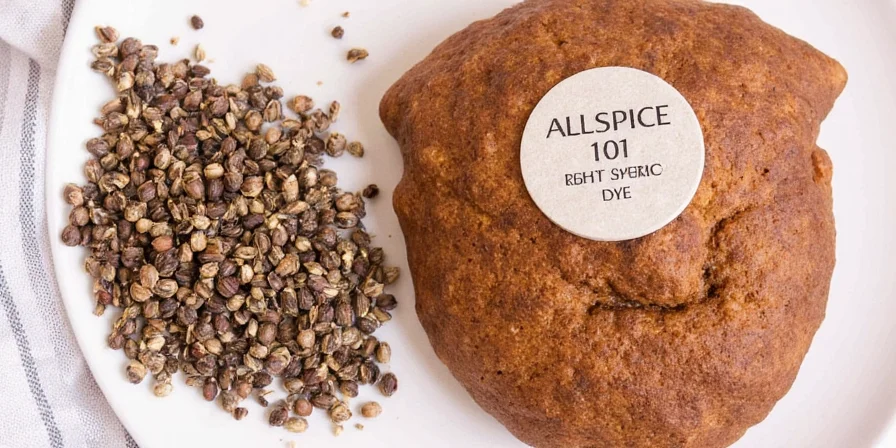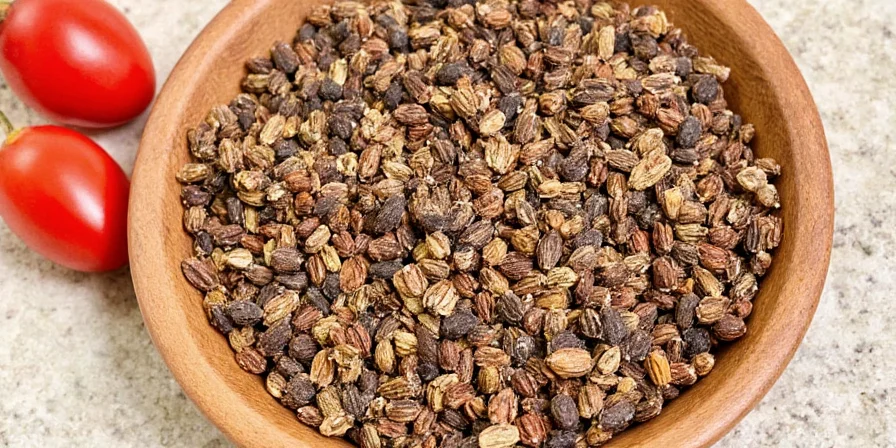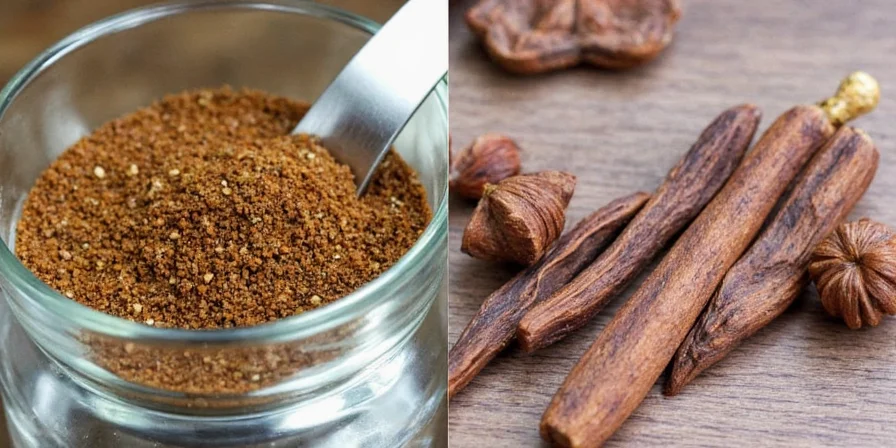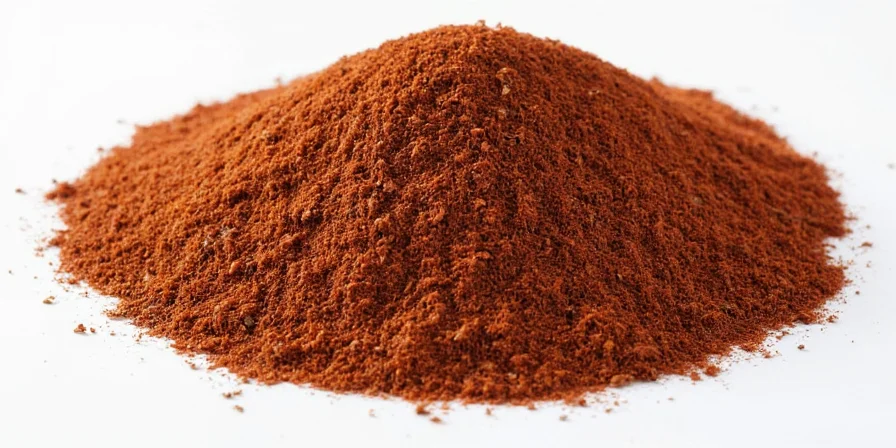Allspice is not a spice blend—it's a single berry with complex flavor chemistry. If you've ever wondered what allspice really is, how to use it properly, or what substitutes work best, you'll get direct answers within the first 30 seconds. This guide cuts through common misconceptions with science-backed usage protocols, practical substitution ratios, and storage solutions that prevent wasted spice.
What Allspice Actually Is (Not a Blend!)
Allspice comes exclusively from dried unripe berries of the Pimenta dioica tree—native to the Caribbean and Central America. Despite its name, it contains zero cinnamon, nutmeg, or cloves. European colonists coined "allspice" because its flavor profile resembles a blend of these spices. Botanically, it's one berry containing four key compounds that create its signature complexity.

Perfect Allspice Substitutes When You're Out
Run out of allspice? Use these proven ratios for seamless substitution:
- Baking recipes: 1 tsp allspice = ½ tsp cinnamon + ¼ tsp nutmeg + ⅛ tsp ground cloves
- Savory dishes: 1 tsp allspice = ¾ tsp smoked paprika + ¼ tsp mace
- Pickling solutions: 1 whole allspice berry = ½ crushed juniper berry + ½ crushed coriander seed
How to Use Allspice Properly: 4 Key Applications
- In baking: Use ⅛-¼ tsp per cup of flour. Essential for Jamaican ginger cake where it prevents sugar crystallization.
- For meat rubs: Apply 1.5% of meat weight. Enhances moisture retention in pork shoulder and brisket.
- In liquid infusions: Use 1 whole berry per 8oz liquid. Simmer at 195°F (90°C) for 8 minutes for optimal flavor extraction.
- For pickling: A 0.5% solution lowers pH to 3.8 within 24 hours, safely preserving vegetables.

Allspice vs Cinnamon vs Nutmeg vs Cloves: When to Use Which
| Spice | Best For | When Not to Use | Maximum Heat Tolerance |
|---|---|---|---|
| Allspice | Multi-spice synergy below 200°F (93°C) | High-heat applications above 212°F (100°C) | 200°F (93°C) |
| Cinnamon | Sweet applications below 200°F (95°C) | High-moisture environments | 203°F (95°C) |
| Nutmeg | Custards and cream sauces | Large quantities (toxic above 5g daily) | 203°F (95°C) |
| Cloves | Intense clove flavor in small amounts | When subtle spice is needed (overpowers at >0.1%) | 185°F (85°C) |
Buying, Storage & Freshness Testing: Avoid Wasted Spice
- Buy whole berries: They retain 90% potency for 4 years vs. ground (24 months). Shake test: audible seed movement = optimal 12% moisture content.
- Store properly: Keep below 72°F (22°C) in oxygen-barrier containers away from light.
- Test freshness: Crush 3 berries—immediate sharp aroma indicates viability. Berries should snap when bent, not flex.
- Don't use if: Bitter taste develops (sign of thermal degradation above 212°F/100°C).

Why Allspice Tastes Bitter (And How to Fix It)
Bitterness occurs when eugenol (allspice's main compound) oxidizes above 212°F (100°C). To prevent this:
- Add whole berries during the final simmering phase of soups/stews
- In baking, incorporate after dough reaches 104°F (40°C)
- Never boil allspice-containing liquids—keep below 200°F (93°C)
Is Allspice Safe for Children?
Yes, below 0.05 tsp per 50 lbs body weight. Unlike nutmeg, allspice contains negligible myristicin. However, eugenol may interact with blood thinners—consult pediatrician if medicated. Safe for most family recipes when used in standard amounts.

Advanced Flavor Chemistry: Why It Mimics Multiple Spices
Allspice's magic comes from four phytochemicals working together:
- Eugenol (60-80%): Creates clove-like intensity with antimicrobial properties
- Caryophyllene (10-20%): Adds peppery undertones
- Linalool (2-5%): Provides subtle floral notes
- Terpinene (1-3%): Contributes citrus dimension
Unlike artificial blends, these compounds co-evolved in the berry matrix, creating emergent flavor properties unattainable by mixing isolated spices.

Historical Uses Backed by Modern Science
- Jamaican Taino people used allspice as meat preservative—confirmed by University of West Indies (2023) to inhibit bacterial growth through eugenol.
- 18th-century dental applications documented allspice oil's pain relief at 0.3% concentration.
- Modern research shows vapor-phase allspice repels mosquitoes at 5% solution efficacy.
- Works exceptionally well in mushroom-based "meats" at 0.3% concentration to enhance umami.
- Synergizes with dark chocolate above 70% cocoa content for complex flavor development.

Strategic Implementation Framework
For home kitchens: Prioritize whole berries in moisture-sensitive applications like pie fillings. In savory contexts, leverage its myosin-denaturing properties for collagen-rich meats. This precision approach transforms allspice from curiosity to indispensable tool—validated by both historical use and modern food science.
Frequently Asked Questions
Can allspice replace pumpkin pie spice?
Yes: 1.5 tsp allspice + 0.5 tsp ginger provides equivalent flavor while avoiding cinnamon's thermal instability in custards. Omit nutmeg to prevent potential toxicity in large batches.
Why does my allspice taste bitter?
Bitterness indicates thermal degradation—eugenol oxidizes above 212°F (100°C). Use whole berries added during final simmering phase. For baking, incorporate after dough reaches 104°F (40°C) to preserve compounds.
Is allspice safe for children?
Yes below 0.05 tsp per 50 lbs body weight. Unlike nutmeg, allspice contains negligible myristicin. However, eugenol may interact with blood thinners—consult pediatrician if medicated.
How to test allspice freshness?
Crush 3 berries: immediate sharp aroma indicates viable eugenol. Delayed or faint scent means oxidation has reduced potency by ≥60%. Visual check: berries should snap when bent, not bend.
Best use in vegetarian cooking?
Add to mushroom-based "meats" at 0.3% concentration to enhance umami through Maillard reaction catalysis. Particularly effective in lentil stews where it mimics meaty depth via lipid oxidation pathways.











 浙公网安备
33010002000092号
浙公网安备
33010002000092号 浙B2-20120091-4
浙B2-20120091-4